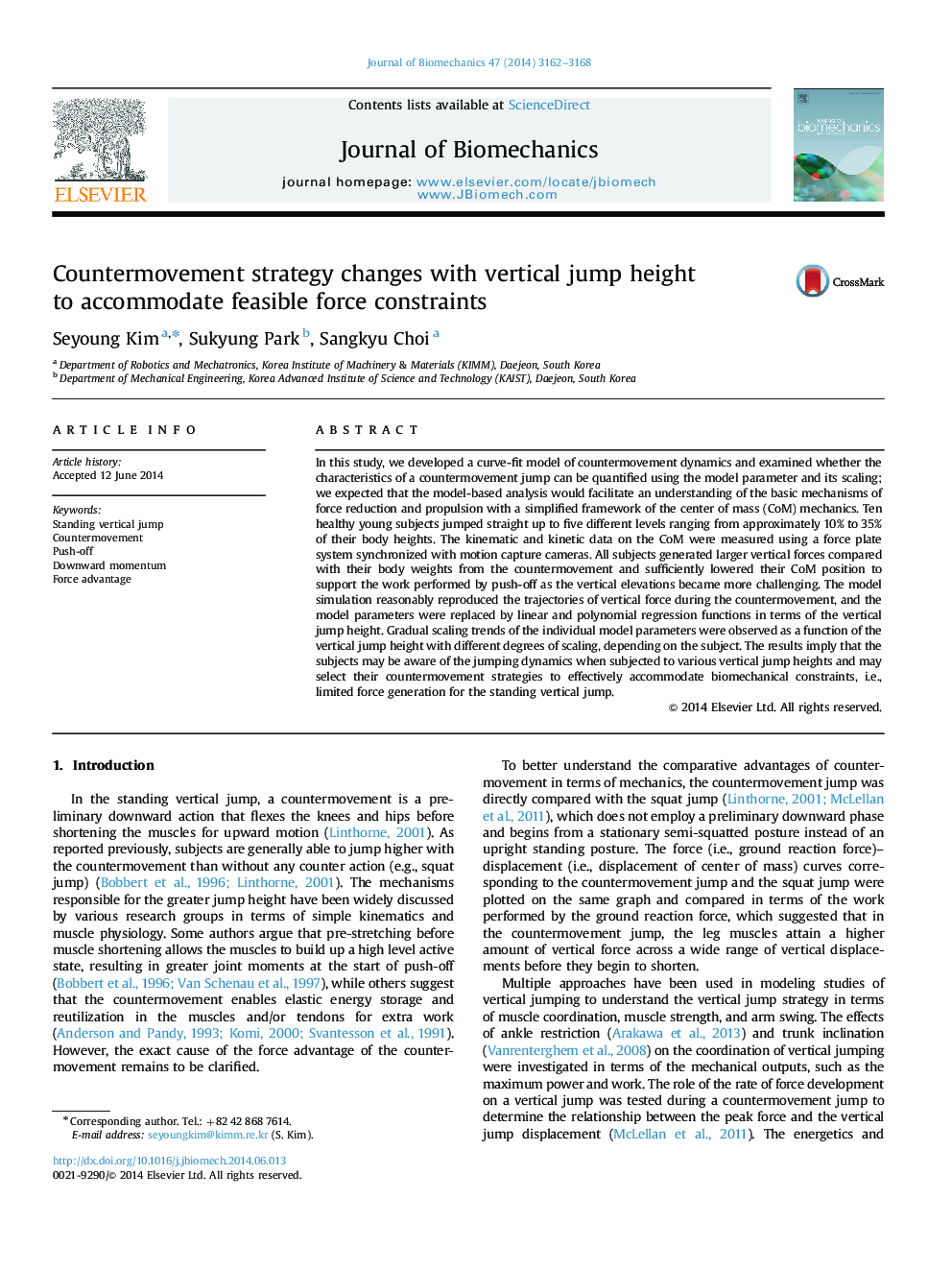| Article ID | Journal | Published Year | Pages | File Type |
|---|---|---|---|---|
| 10432136 | Journal of Biomechanics | 2014 | 7 Pages |
Abstract
In this study, we developed a curve-fit model of countermovement dynamics and examined whether the characteristics of a countermovement jump can be quantified using the model parameter and its scaling; we expected that the model-based analysis would facilitate an understanding of the basic mechanisms of force reduction and propulsion with a simplified framework of the center of mass (CoM) mechanics. Ten healthy young subjects jumped straight up to five different levels ranging from approximately 10% to 35% of their body heights. The kinematic and kinetic data on the CoM were measured using a force plate system synchronized with motion capture cameras. All subjects generated larger vertical forces compared with their body weights from the countermovement and sufficiently lowered their CoM position to support the work performed by push-off as the vertical elevations became more challenging. The model simulation reasonably reproduced the trajectories of vertical force during the countermovement, and the model parameters were replaced by linear and polynomial regression functions in terms of the vertical jump height. Gradual scaling trends of the individual model parameters were observed as a function of the vertical jump height with different degrees of scaling, depending on the subject. The results imply that the subjects may be aware of the jumping dynamics when subjected to various vertical jump heights and may select their countermovement strategies to effectively accommodate biomechanical constraints, i.e., limited force generation for the standing vertical jump.
Keywords
Related Topics
Physical Sciences and Engineering
Engineering
Biomedical Engineering
Authors
Seyoung Kim, Sukyung Park, Sangkyu Choi,
